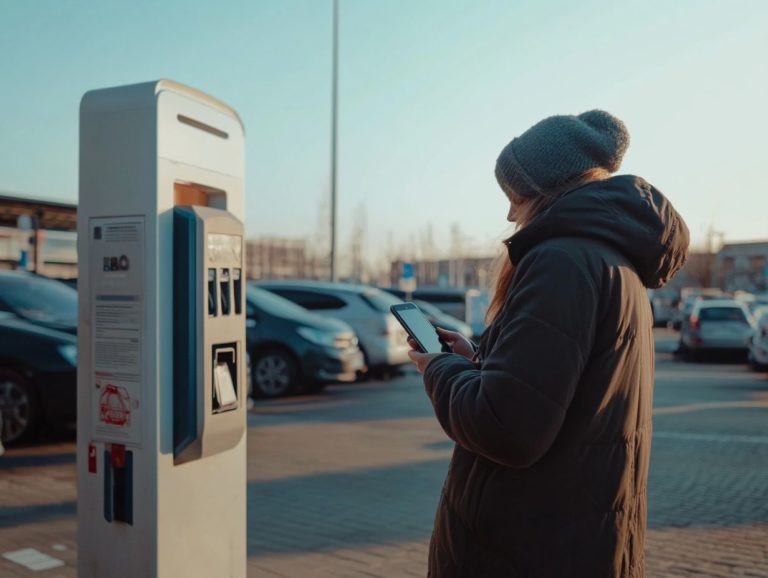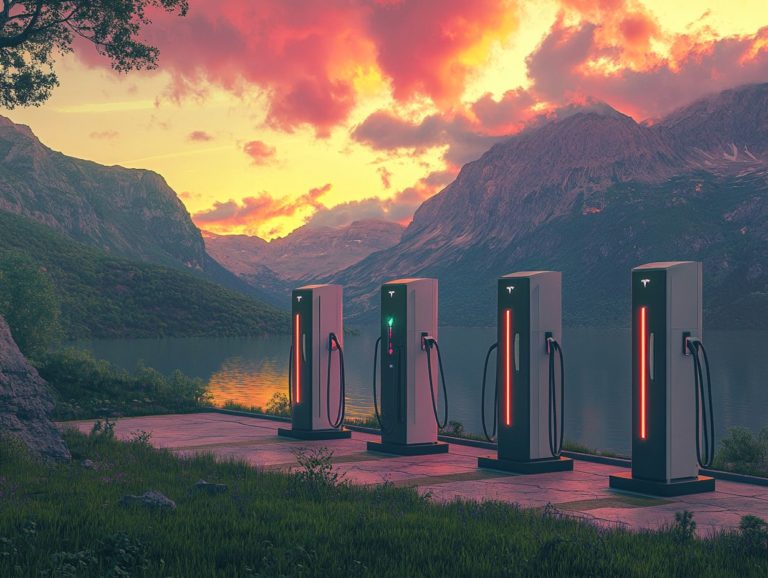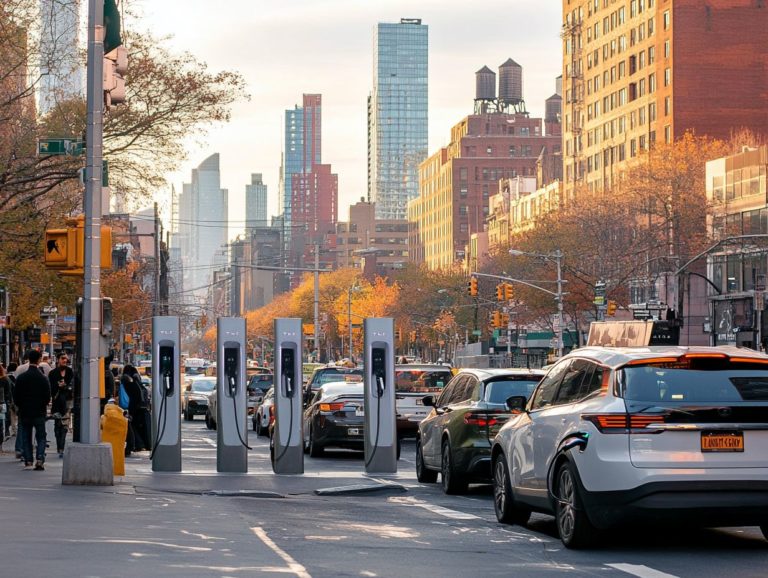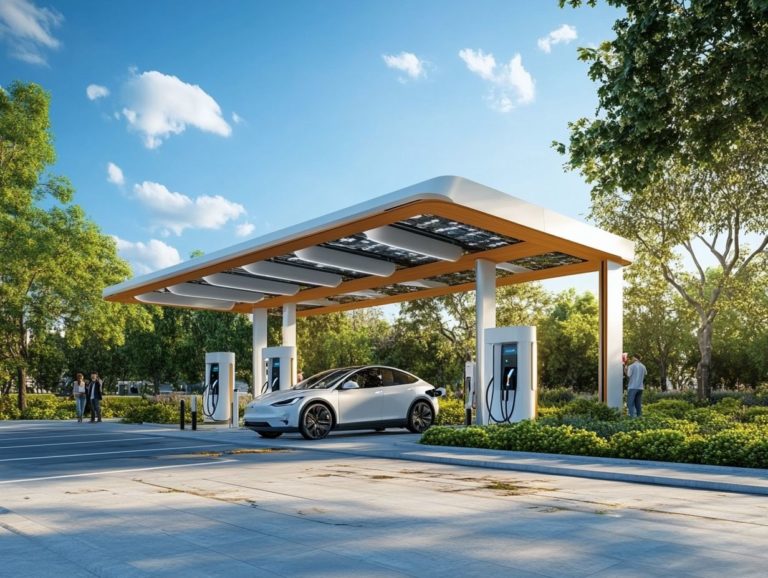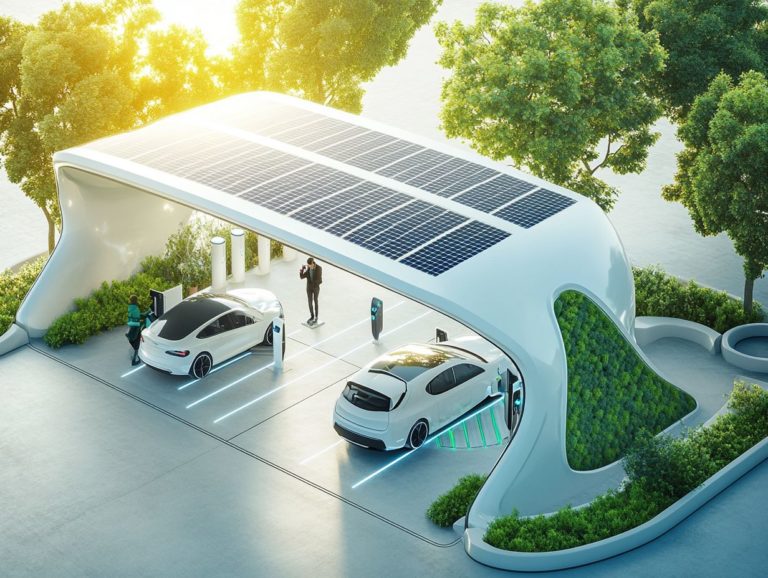How Fast Can EV Chargers Really Go?
As electric vehicles (EVs) rise in popularity, grasping the intricacies of EV chargers is crucial for both drivers and enthusiasts. Are you ready to unlock the full potential of your electric vehicle?
This article delves into the diverse types of chargers available, ranging from slow to fast charging options. It examines the factors that impact charging speed, such as battery capacity and infrastructure.
You ll find a comparison of charging times, along with insights into the latest technological advancements that aim to elevate your EV charging experience. Embark on this journey as you explore the future of EV charging alongside us.
Contents
- Key Takeaways:
- Understanding EV Chargers
- Factors Affecting Charging Speed
- Fast Charging vs. Slow Charging
- Improving EV Charging Speed
- Frequently Asked Questions
- What is the maximum charging speed of an EV charger?
- How fast can a Level 1 EV charger charge an electric vehicle?
- Can an EV charger charge multiple vehicles at once?
- How fast can a DC fast charger charge an electric vehicle?
- What factors can affect the charging speed of an EV charger?
- Are there any safety concerns with high-speed EV chargers?
Key Takeaways:
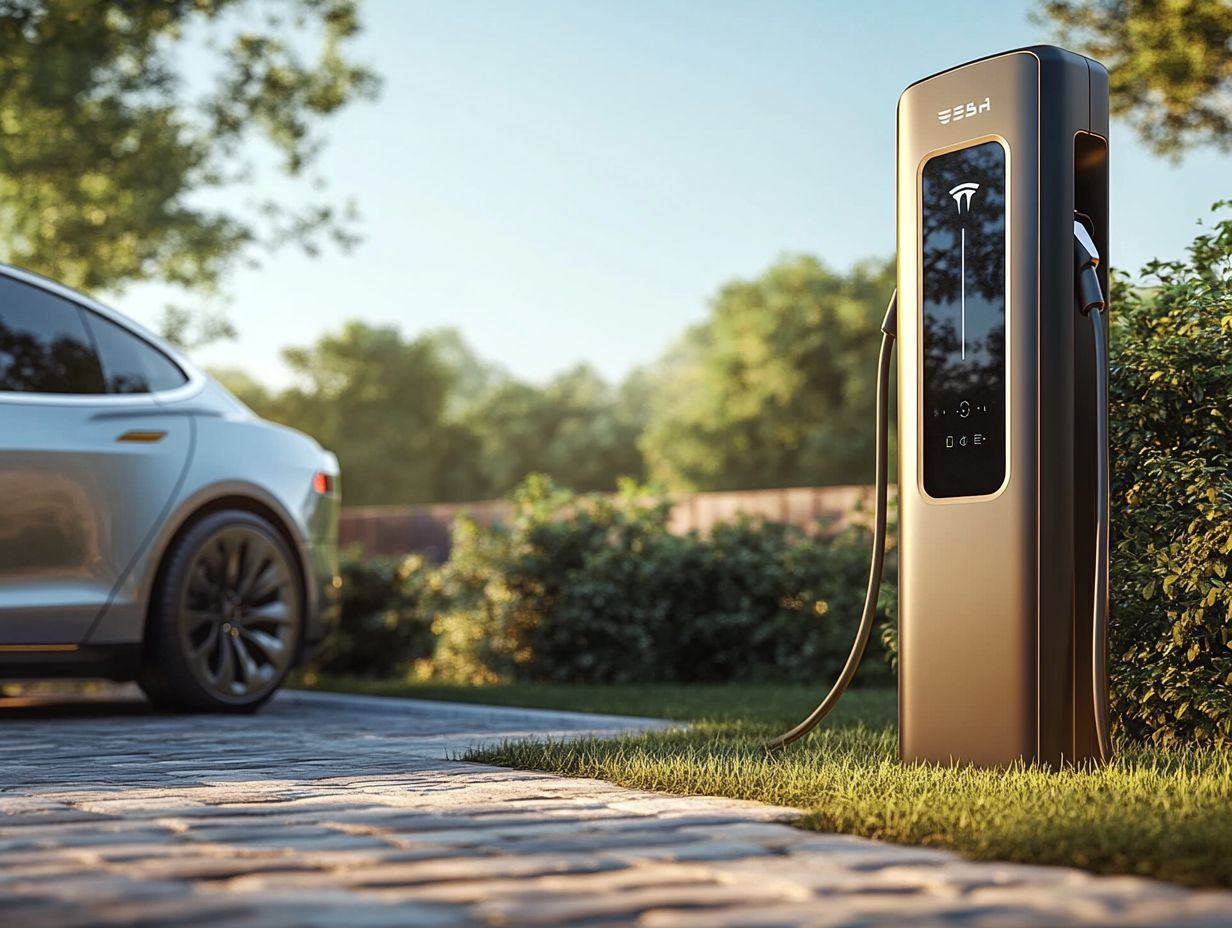
- EV charging speed is influenced by factors such as battery capacity, charging station setups, and technological advancements.
- Fast charging is significantly quicker than slow charging, but both have their advantages depending on the situation.
- With advancements in technology and infrastructure, the future of EV charging looks promising with faster and more efficient charging options. Don t miss out on the latest charging technology that can transform your EV experience!
Understanding EV Chargers
Grasping the intricacies of EV chargers is crucial for anyone eager to fully embrace the potential of electric vehicles (EVs) in today s fast-paced automotive environment.
As battery electric vehicles (BEVs) and plug-in hybrid electric vehicles (PHEVs) gain traction, the demand for a dependable and efficient charging setups has reached new heights. You ll encounter various types of chargers Level 1, Level 2, and direct current fast chargers (DCFC) each providing different charging methods and efficiencies that can significantly influence your overall EV charging experience.
Types of EV Chargers
There are several types of EV chargers tailored to meet various charging needs and scenarios, including Level 1 chargers, Level 2 chargers, and DC fast chargers (DCFC).
Level 1 chargers typically deliver a modest power output of 1.4 kW, requiring about 8 to 12 hours to fully charge your electric vehicle. This makes them ideal for overnight charging at home, where you have plenty of time to let the battery replenish.
On the other hand, Level 2 chargers, with power outputs ranging from 3.3 kW to 19.2 kW, can refresh your EV’s battery in roughly 4 to 8 hours. These are perfect for public charging stations and workplaces where your vehicle is parked for longer stretches.
If you’re in a hurry, rapid DC fast chargers are your best bet. With power outputs between 25 kW and over 350 kW, they can give you an 80% charge in just about 20 to 30 minutes. To learn more about charging times, check out how long it takes to charge an EV.
Connector types like CCS (Combined Charging System) and CHAdeMO are essential for ensuring compatibility across different EV models. Notably, the Tesla Supercharger has become a hallmark of fast and efficient charging, allowing Tesla owners to recharge quickly during long journeys.
Factors Affecting Charging Speed
Several factors influence the charging speed of electric vehicles, making it essential for you as an EV owner to grasp how these elements interact to enhance your charging experience.
- The type of charger you choose.
- The battery capacity of your electric vehicle.
- The maximum charge rate supported by both the charger and your vehicle s battery control system, which is the system that controls how your vehicle’s battery is charged and used.
- Environmental conditions, such as temperature, can significantly affect how efficiently your vehicle charges.
Understanding these dynamics will enable you to optimize your charging routine.
Battery Capacity and Charging Rate
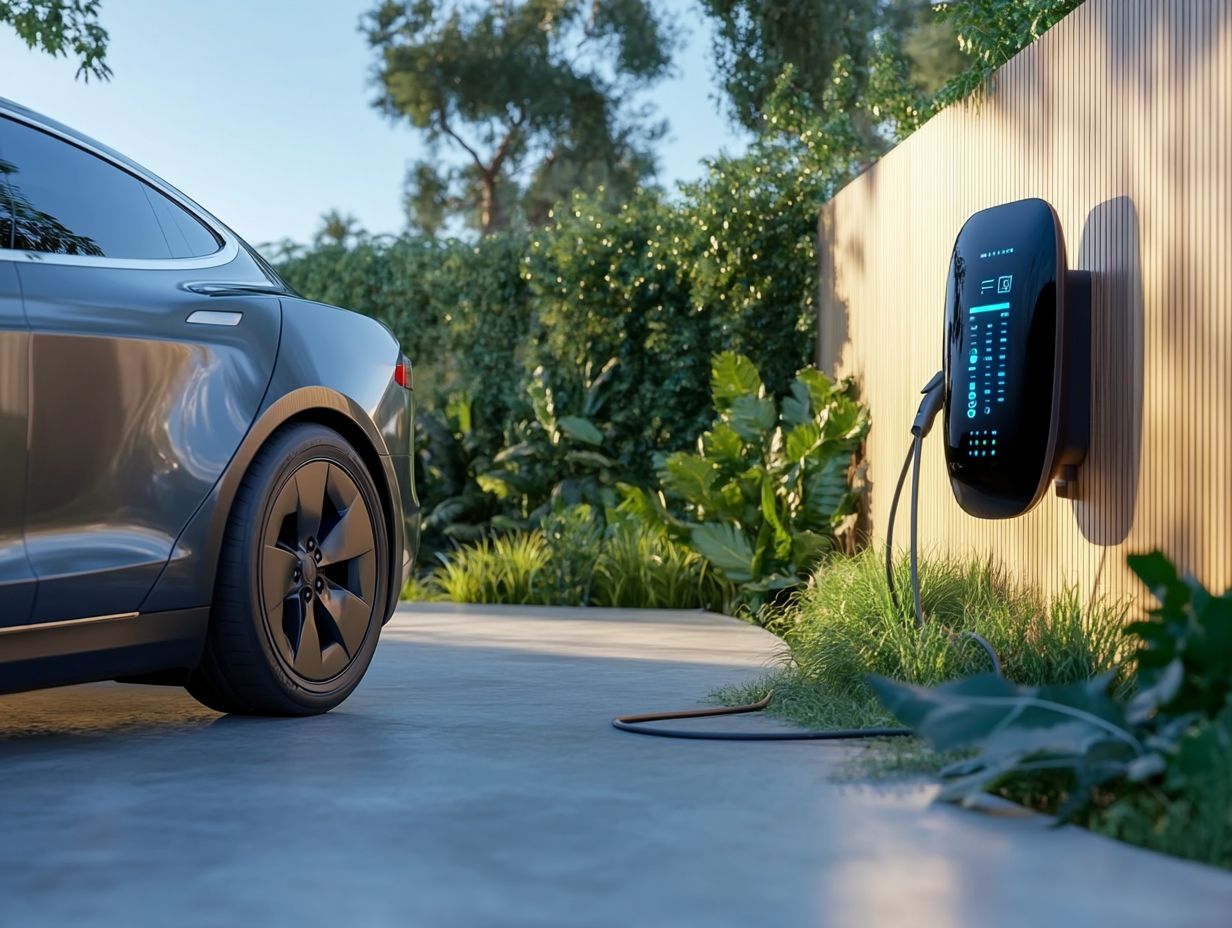
Battery capacity is key to how quickly electric vehicles charge. It affects both charging time and how far you can drive.
The energy density of the battery especially in lithium-ion and solid-state batteries determines not only how much energy can be stored but also how quickly that energy can be replenished during charging.
This dynamic is crucial for those who rely on their vehicles for daily commutes and long journeys.
Today s widely used lithium-ion batteries offer fast charging capabilities but come with challenges like heat management problems and lifespan concerns.
Solid-state batteries promise higher energy density and quicker charging times, potentially transforming electric vehicle performance by extending range while drastically reducing charge times.
As automotive technology advances, recognizing these differences helps you make informed choices tailored to your unique driving needs and preferences.
Charging Station Infrastructure
The charging station infrastructure is essential for your seamless transition to electric vehicle ownership. It includes public charging stations, private home charging solutions, and a network designed to support EVs across various regions.
A well-developed charging infrastructure boosts accessibility for EV owners and ensures that the electric grid can meet the growing demand for charging.
This infrastructure includes exciting features like Level 2 chargers commonly found in residential areas and fast chargers strategically placed along highways for long-distance travel needs.
Public charging networks are pivotal, providing convenient locations for drivers who may lack access to home charging. This ultimately instills confidence in your decision to embrace EV ownership.
The connection between the electric grid and EV charging is vital. As more electric vehicles populate the roads, the grid must evolve to handle increased energy demands while integrating renewable energy sources to minimize environmental impact.
Investing in charging infrastructure is essential now to support a sustainable future for transportation, paving the way for your journey towards a greener lifestyle.
Fast Charging vs. Slow Charging
Fast charging and slow charging embody two distinct approaches within the electric vehicle charging landscape. Each carries its own set of advantages and disadvantages that influence your experience and your vehicle’s performance.
Fast charging typically provided by Direct Current Fast Charging (DCFC) or Tesla Supercharger stations offers rapid energy replenishment, making it an excellent choice for long-distance journeys.
In contrast, slow charging, often linked to Level 1 or Level 2 chargers, is more suitable for home charging situations where you can conveniently recharge overnight.
Comparison of Charging Times
The comparison of charging times among various types of chargers unveils significant disparities in how swiftly your electric vehicle can regain its charge crucial for those who value their time.
While Level 1 chargers offer convenience for home use, they often lead to prolonged charging sessions. Typically, they require several hours to fully recharge your vehicle.
Level 2 chargers drastically reduce those charging times, while DC Fast Chargers (DCFC) or Tesla Superchargers can rejuvenate an electric vehicle’s battery in mere minutes.
For instance, a Nissan Leaf hooked up to a Level 1 charger may take around 8 to 12 hours for a full charge, making it perfect for overnight charging. If you opt for a Level 2 charger, you could gain 20 to 25 miles of range per hour.
Using a high-powered DCFC, a newer model like the Ford Mustang Mach-E can leap from 10% to 80% battery in approximately 38 minutes, enabling you to hit the road with minimal downtime.
Ultimately, understanding these distinct charging types allows you, as an EV owner, to make informed decisions about your energy needs.
Discover the best charging solutions that fit your lifestyle and keep you on the road!
Improving EV Charging Speed
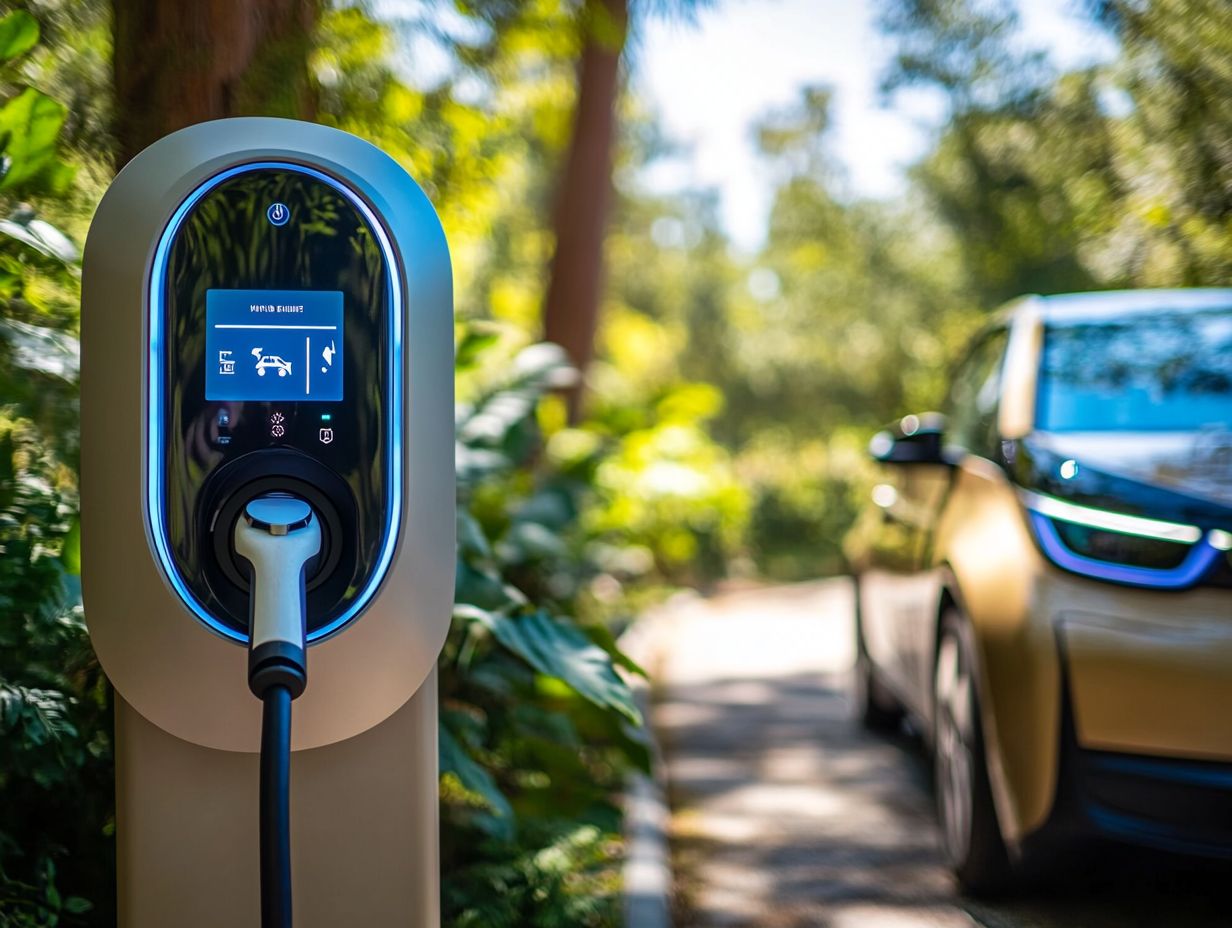
Improving EV charging speed is essential for drivers. Manufacturers and developers are relentlessly pursuing advancements that enhance both charging capabilities and overall efficiency.
The increased power output from chargers, combined with smarter battery management systems, plays a pivotal role in optimizing charging times.
Ongoing research focuses on battery health and longevity. This research aims to extend the lifespan of electric vehicle batteries, ensuring your investment remains robust and reliable for years to come.
Advancements in Technology
Recent advancements in technology are dramatically transforming the EV charging landscape. Groundbreaking innovations like solid-state batteries and enhanced charging technologies are leading the charge. These innovations boost charging efficiency and improve the overall performance and longevity of electric vehicle batteries.
As these technologies evolve, you ll benefit from faster charge times and greater energy density, significantly extending the range of electric vehicles. Solid-state batteries, which use solid materials instead of liquids, enhance safety and reduce the risk of fires.
This transition not only improves energy output but also contributes to a lighter vehicle design, further elevating performance.
Emerging smart charging technologies enable your vehicle to communicate with the grid. This optimizes energy consumption and potentially lowers costs for you. Together, these innovations represent a significant leap toward a more efficient and reliable electric mobility ecosystem.
Future of EV Charging
The future of EV charging is set to be more efficient, accessible, and environmentally friendly. Ongoing advancements in charging infrastructure and innovative battery management techniques are leading the way.
As public charging networks expand and new technologies emerge, you can expect the electric vehicle landscape to evolve, making ownership easier and more appealing.
This transformation will cater to the growing number of electric vehicles on the road, aligning with the global push for sustainability.
Enhanced battery management systems will ensure your vehicle operates at peak performance and enjoys a longer lifespan, effectively reducing your total cost of ownership. As charging stations become widespread, especially in urban areas, the convenience factor will skyrocket.
Environmental considerations, like sourcing renewable energy for charging stations, are crucial in minimizing carbon footprints and promoting cleaner transportation options. Together, these advancements will create a more robust ecosystem for electric mobility, setting the stage for a greener future that benefits everyone.
Frequently Asked Questions
What is the maximum charging speed of an EV charger?
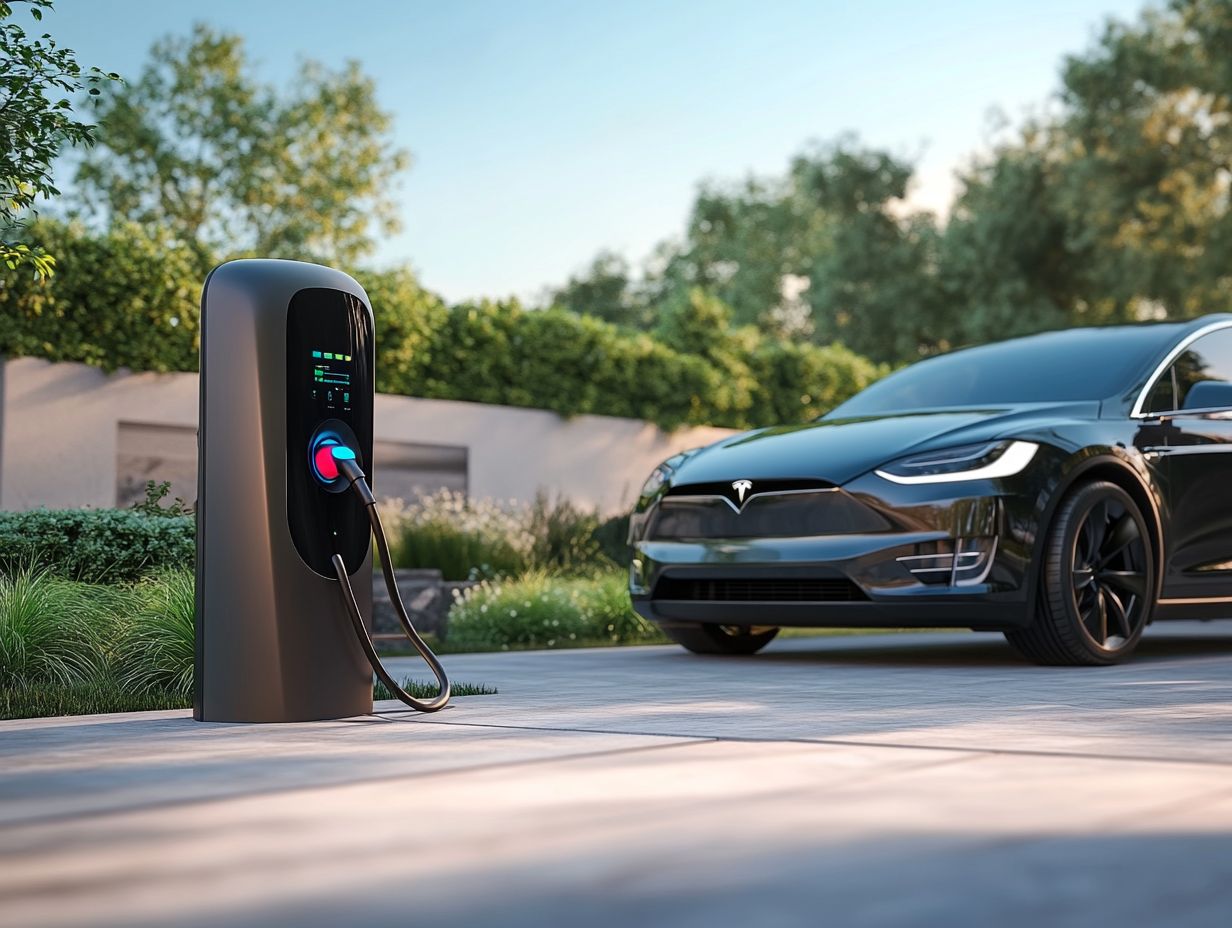
The charging speed of an EV charger depends on its power output and the car’s battery capacity. Most EV chargers can charge at a rate of 7-22 kW per hour, while some high-speed chargers can reach up to 350 kW per hour.
How fast can a Level 1 EV charger charge an electric vehicle?
A Level 1 EV charger, the standard household outlet, typically charges at a rate of 2-5 kW per hour. This means it can take 12-15 hours to fully charge an EV with a larger battery capacity.
Can an EV charger charge multiple vehicles at once?
Yes, some EV chargers can charge multiple vehicles at once. However, charging speed may be reduced if more than one vehicle is connected simultaneously.
How fast can a DC fast charger charge an electric vehicle?
DC fast chargers, also known as Level 3 chargers, can charge an electric vehicle at a rate of 50-350 kW per hour. This allows charging an EV with a larger battery capacity in as little as 30 minutes to an hour.
What factors can affect the charging speed of an EV charger?
Several factors influence the charging speed of an EV charger. These include the charger s power output, the electric vehicle s battery size, the current temperature, and how charged the battery is.
Typically, higher temperatures and lower battery levels lead to faster charging.
Are there any safety concerns with high-speed EV chargers?
Yes, high-speed EV chargers can generate significant heat. If used frequently, they might damage the vehicle’s battery.
Only use these chargers when necessary. Always follow the manufacturer’s safety guidelines for charging.

